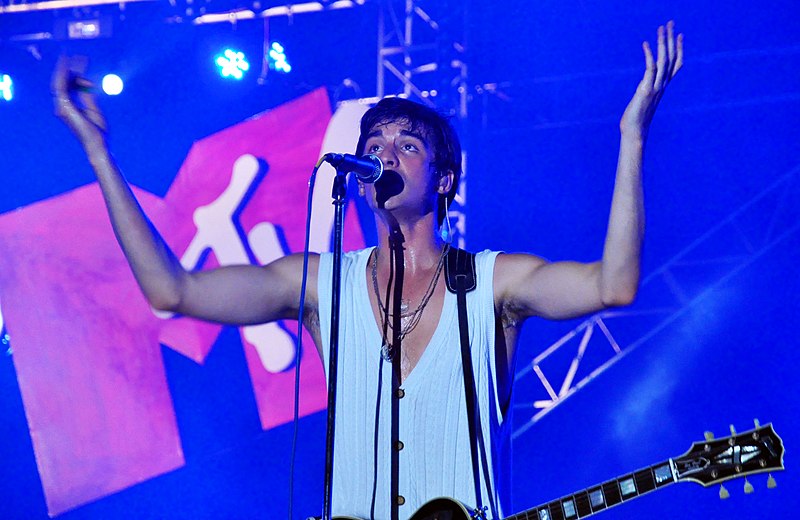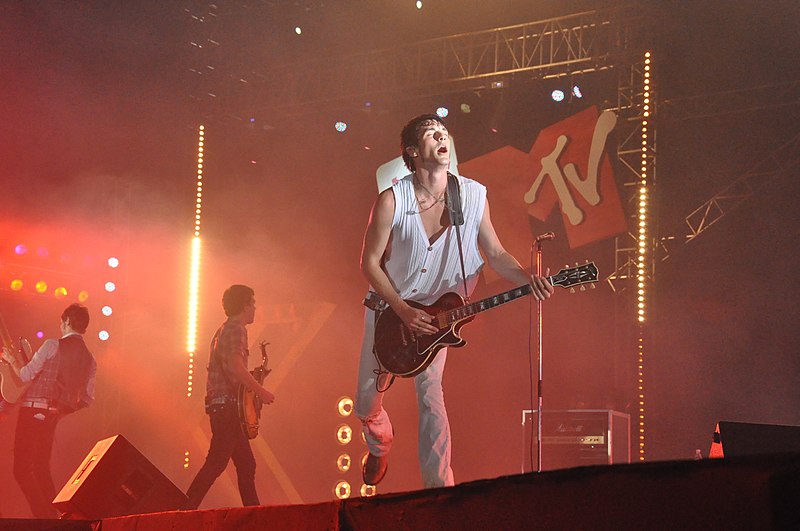In August 1981, the launch of MTV revolutionized not just television but also the entire landscape of popular culture. This groundbreaking network, with its bold concept of a channel exclusively dedicated to music videos, transformed the way music was consumed and marketed. In its early days, MTV wasn’t just about broadcasting songs; it was a dynamic visual medium that blended music with innovative storytelling, creating an entirely new art form that resonated with the youth of the era.
This article discusses the golden era of MTV, exploring how its focus on music videos became a significant cultural phenomenon. We aim to help you learn how MTV influenced fashion, film, and the music industry, shaping the identities of a generation and leaving an indelible mark on pop culture. From iconic videos to legendary artists and shows, we’ll revisit the early days of MTV and understand how a single channel came to define a whole era of entertainment.
The Birth of MTV
MTV, short for Music Television, made its debut on August 1, 1981, and with it came a new era in the music and entertainment industries. The idea was simple yet revolutionary: a television channel entirely devoted to playing music videos 24/7.
Inception and Launch
The concept of MTV was developed by a team at Warner-Amex Satellite Entertainment, a joint venture between Warner Communications and American Express. With the iconic phrase “Ladies and gentlemen, rock and roll,” MTV launched, playing its first music video, “Video Killed the Radio Star” by The Buggles. The channel initially faced limitations in reach, only available to households in parts of New Jersey.
The Vision Behind MTV
MTV’s founders, including John Lack, Robert Pittman, and others, envisioned a platform that would combine the growing popularity of television with the thriving music scene. The goal was to revolutionize how music was promoted and consumed, giving visual context to songs and offering a new outlet for artists to express themselves.
Early Challenges and Breakthrough
One of the initial challenges MTV faced was the limited availability of music videos, leading them to play a relatively small rotation repeatedly. The channel struggled with securing widespread cable carrier distribution, as many providers were skeptical of its potential success.
MTV’s breakthrough came as it started gaining popularity among teenagers and young adults, particularly in markets where cable television was prevalent. The demand from this demographic pushed more cable providers to include MTV in their lineup.
The network also faced resistance from some music labels and artists who were hesitant about this new format. However, as MTV’s popularity soared, it became clear that appearing on the channel could significantly boost an artist’s profile and sales.
The birth of MTV marked the beginning of a new cultural phenomenon. It not only changed the music industry but also had a profound impact on television, fashion, and youth culture. MTV’s early days set the stage for the channel’s role as a cultural tastemaker and a powerful platform in the music and entertainment industries.
The Golden Era of Music Videos
The early years of MTV, often referred to as the “Golden Era” of music videos, were a period of creativity, experimentation, and unprecedented influence in both the music and television industries.
Emergence of Music Videos as an Art Form:
- During this era, music videos evolved from mere promotional tools to an art form in their own right. Directors like Russell Mulcahy, David Mallet, and Steve Barron became as influential as the artists themselves, known for their innovative and visually captivating video styles.
- Music videos became a medium for storytelling, with elaborate narratives, cutting-edge special effects, and cinematography that pushed the boundaries of conventional music presentation.
Rise of Iconic Music Videos and Directors:
- This period saw the creation of some of the most iconic music videos that remain influential to this day. Michael Jackson’s “Thriller,” directed by John Landis, is a prime example of blending music with cinematic storytelling.
- Madonna’s “Like a Virgin,” Peter Gabriel’s “Sledgehammer,” and Duran Duran’s “Hungry Like the Wolf” are other examples of videos that defined the era and influenced future generations of artists and filmmakers.
MTV as a Platform for Artist Debut:
- MTV quickly became the most coveted platform for artists to debut their music videos. A premiere on MTV could catapult a song to the top of the charts and turn artists into household names overnight.
- The channel played a pivotal role in the careers of artists like Madonna, Prince, and Cyndi Lauper, whose visual presentation was as integral to their artistry as their music.
The Golden Era of music videos was a time when MTV reigned supreme in the pop culture landscape. It was a period marked by creativity, innovation, and the blurring of lines between music and visual art. Music videos became a powerful form of expression and a crucial component of an artist’s identity and marketing strategy, thanks to the global platform provided by MTV.
MTV’s Influence on Pop Culture
MTV’s influence during its early days extended far beyond the realm of music videos, leaving an indelible mark on pop culture as a whole. Its impact was felt in fashion, language, film, and even lifestyle.
Trendsetting in Fashion and Style
- MTV became a fashion trendsetter. The styles and aesthetics showcased in music videos often translated directly into mainstream fashion trends. Madonna’s iconic look in “Like a Virgin” and Michael Jackson’s red leather jacket and sequined glove are perfect examples.
- The channel also highlighted subcultures and alternative fashion styles, giving them a platform and influencing mainstream fashion.
Influence on the Music Industry and Artist Branding
- The importance of image and branding in an artist’s career became more pronounced with MTV. It wasn’t just about the music anymore; it was also about how artists presented themselves visually.
- MTV’s platform allowed artists to create a more comprehensive and appealing persona, leading to increased album sales, concert attendance, and fan engagement.
Creation of New Music Genres and Rise of Superstar Artists
- MTV helped in popularizing new music genres. The channel was instrumental in bringing hip-hop to a wider audience with shows like “Yo! MTV Raps.”
- The channel’s heavy rotation of certain artists played a significant role in creating ‘superstars,’ Artists like Madonna, Michael Jackson, and Prince became not just musicians but global icons, largely due to their exposure on MTV.
MTV’s early days were characterized by its ability to influence and, to some extent, dictate pop culture trends. From fashion to music and beyond, the channel’s impact was profound, creating a unique cultural ecosystem that mirrored the tastes and preferences of a whole generation. MTV became more than a channel; it was a cultural curator and a mirror of the dynamic shifts happening in society.
Iconic Shows and VJs
Alongside its groundbreaking music videos, MTV introduced several iconic shows and charismatic video jockeys (VJs) that became staples of 1980s pop culture and significantly contributed to the network’s identity and influence.
Introduction of Groundbreaking Shows
- MTV diversified its programming with a variety of shows that became cultural landmarks. “MTV Unplugged,” which debuted in 1989, featured artists performing acoustic sets, offering a new perspective on popular songs and artists.
- “Yo! MTV Raps,” introduced in 1988, played a pivotal role in bringing hip-hop to a wider audience, showcasing artists and music that were previously underrepresented in mainstream media.
- Shows like “Headbangers Ball” and “Club MTV” catered to specific music genres and subcultures, reinforcing MTV’s role as a diverse and inclusive music platform.
The Role of VJs (Video Jockeys)
- VJs were more than just hosts; they were trendsetters and influencers who helped define the MTV brand. Early VJs like Martha Quinn, Mark Goodman, Alan Hunter, Nina Blackwood, and J.J. Jackson became celebrities in their own right, known for their distinctive personalities and deep knowledge of music.
- These VJs not only introduced videos but also provided commentary, conducted artist interviews, and became a bridge between the artists and the audience. They play a crucial role in shaping viewers’ music tastes and perceptions.
Cultural Impact of MTV’s Shows and Personalities
MTV’s shows and VJs had a significant cultural impact, influencing everything from fashion and slang to attitudes and lifestyles. They became integral parts of youth culture, resonating with and reflecting the aspirations and attitudes of a generation. The influence of these shows extended beyond entertainment, often sparking conversations about social issues, musical trends, and the music industry in general.
MTV’s iconic shows and VJs were instrumental in cementing the network’s status as a cultural beacon. They not only shaped the network’s image but also played a critical role in defining the pop culture landscape of the 1980s and early 1990s, leaving a legacy that continues to be felt in modern entertainment.
MTV and Its Global Impact
MTV’s influence quickly transcended American borders, impacting global pop culture, music trends, and even lifestyles. The network’s expansion into international markets introduced a new dimension to its cultural imprint.
- Expansion to International Markets: Following its success in the United States, MTV expanded into Europe, Asia, Latin America, and other regions. Each new channel tailored its content to local music trends and audiences while maintaining the core MTV brand. This global expansion was not just a business strategy but also a cultural exchange, introducing international audiences to American music and vice versa.
- Cross–Cultural Influences and the Global Music Scene: MTV played a significant role in promoting cross-cultural musical influences. Artists from various countries gained exposure to international audiences, breaking the geographical barriers that had previously limited their reach. The network helped popularize genres like British New Wave, Latin Pop, and J-pop, which might have remained regional without this platform.
- MTV’s Role in Promoting Global Music Artists and Styles: MTV became a launching pad for non-American artists to achieve international fame. Bands like Duran Duran, INXS, and later, global sensations like BTS owe a part of their global popularity to exposure on MTV. The network also brought attention to global issues through events like Live Aid in 1985 and, later, the MTV Europe Music Awards, celebrating the diversity of the global music scene.
The global impact of MTV reshaped not just the music industry but also contributed to the globalization of pop culture. By bridging geographical and cultural divides, MTV fostered a more interconnected global music community and broadened the horizons of audiences and artists alike. This international expansion solidified MTV’s role as a global cultural icon, influencing fashion, language, and lifestyle across continents.
The Transition of MTV
As the years progressed, MTV underwent significant changes in its programming and overall focus, marking a transition from its original identity as a music video channel to a more diverse entertainment network.
Shift from Music Videos to Reality TV and Other Forms of Entertainment
By the late 1990s and early 2000s, MTV gradually shifted its focus from exclusively airing music videos to incorporating a variety of other programming, including reality TV shows, documentaries, and scripted series. Shows like “The Real World,” “Jersey Shore,” and “Pimp My Ride” signaled this shift, focusing more on lifestyle and entertainment rather than music content. These programs gained immense popularity and became synonymous with the new MTV brand.
Factors Contributing to the Change in Programming
The change in programming was driven by various factors, including changes in viewer preferences, the evolution of the music industry, and the rise of the internet and digital platforms for music consumption. Competition from other channels and online platforms also played a role, as MTV sought to retain its relevance and appeal to younger audiences who were consuming media in different ways.
The Legacy of MTV’s Early Days in the Current Media Landscape
Despite the shift in focus, the legacy of MTV’s early days as a pioneer of music videos and pop culture remains influential. The network’s early emphasis on music videos helped shape the music industry and left a lasting impact on how music is marketed and consumed. MTV’s transformation also reflects broader trends in the entertainment industry, highlighting the network’s adaptability and ongoing influence in shaping popular culture.
The transition of MTV from a music video channel to a broader entertainment network reflects its response to changing times and audience preferences. While this shift was met with mixed reactions from those who fondly remember its music-focused era, it underscores MTV’s role as a dynamic and evolving cultural entity, continually adapting to remain at the forefront of entertainment and youth culture.
Conclusion
MTV’s journey from a groundbreaking music video channel to a diverse entertainment network reflects its significant role in shaping pop culture. From revolutionizing the music industry in its early days to adapting to changing viewer preferences, MTV has continually evolved while leaving an indelible mark on the entertainment landscape. Though its focus has shifted over the years, the influence of MTV’s pioneering era of music videos continues to be felt, highlighting its enduring legacy in the world of music and beyond.
In the 1980s, MTV revolutionized the way people experienced music, with its original music video era leaving a lasting impact on pop culture. Our post, How Did People Listen to Music in the 200s? examines how music consumption evolved in the 2000s, highlighting the shift towards digital formats and online streaming.




